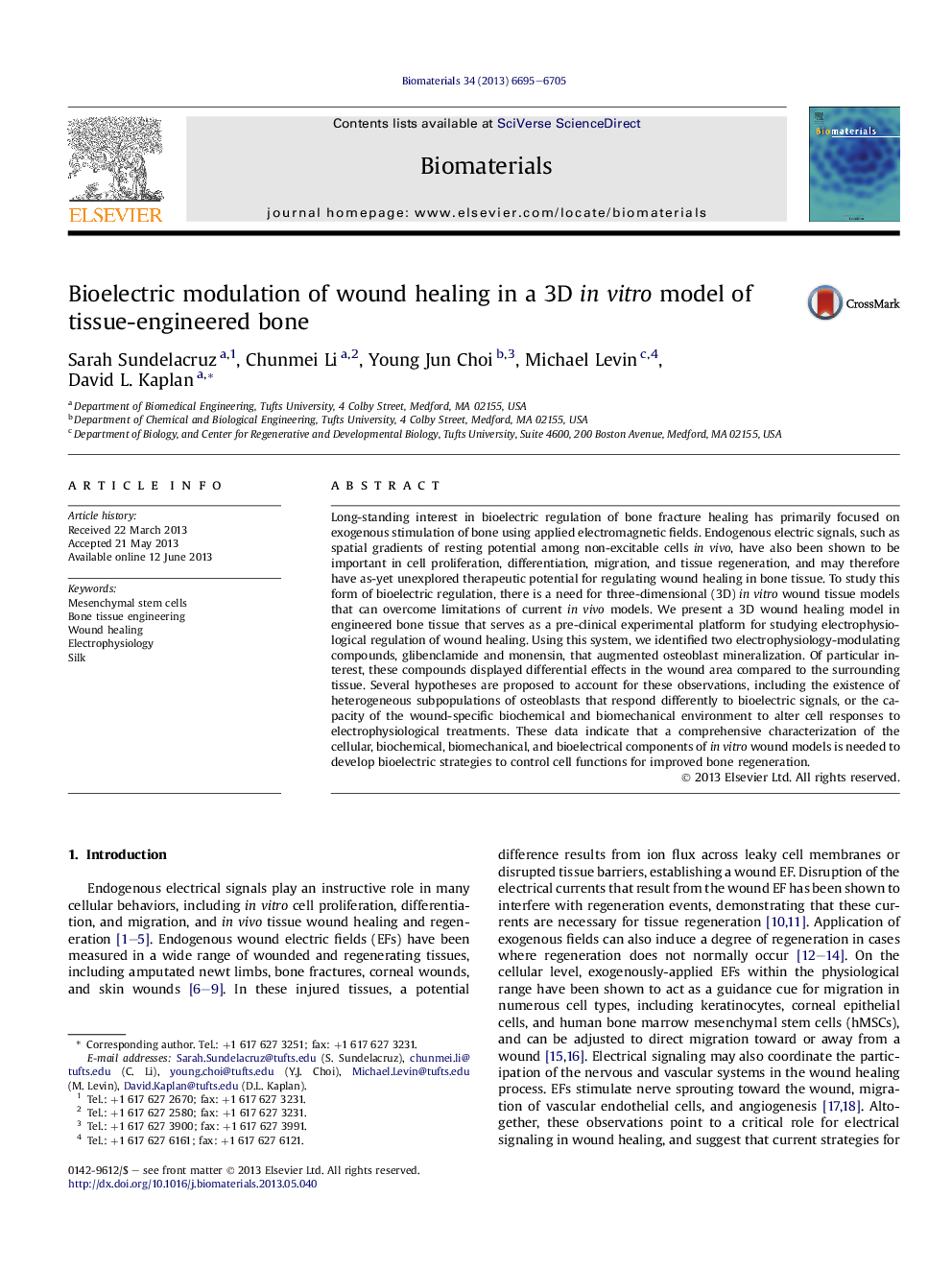| Article ID | Journal | Published Year | Pages | File Type |
|---|---|---|---|---|
| 10228906 | Biomaterials | 2013 | 11 Pages |
Abstract
Long-standing interest in bioelectric regulation of bone fracture healing has primarily focused on exogenous stimulation of bone using applied electromagnetic fields. Endogenous electric signals, such as spatial gradients of resting potential among non-excitable cells in vivo, have also been shown to be important in cell proliferation, differentiation, migration, and tissue regeneration, and may therefore have as-yet unexplored therapeutic potential for regulating wound healing in bone tissue. To study this form of bioelectric regulation, there is a need for three-dimensional (3D) in vitro wound tissue models that can overcome limitations of current in vivo models. We present a 3D wound healing model in engineered bone tissue that serves as a pre-clinical experimental platform for studying electrophysiological regulation of wound healing. Using this system, we identified two electrophysiology-modulating compounds, glibenclamide and monensin, that augmented osteoblast mineralization. Of particular interest, these compounds displayed differential effects in the wound area compared to the surrounding tissue. Several hypotheses are proposed to account for these observations, including the existence of heterogeneous subpopulations of osteoblasts that respond differently to bioelectric signals, or the capacity of the wound-specific biochemical and biomechanical environment to alter cell responses to electrophysiological treatments. These data indicate that a comprehensive characterization of the cellular, biochemical, biomechanical, and bioelectrical components of in vitro wound models is needed to develop bioelectric strategies to control cell functions for improved bone regeneration.
Related Topics
Physical Sciences and Engineering
Chemical Engineering
Bioengineering
Authors
Sarah Sundelacruz, Chunmei Li, Young Jun Choi, Michael Levin, David L. Kaplan,
